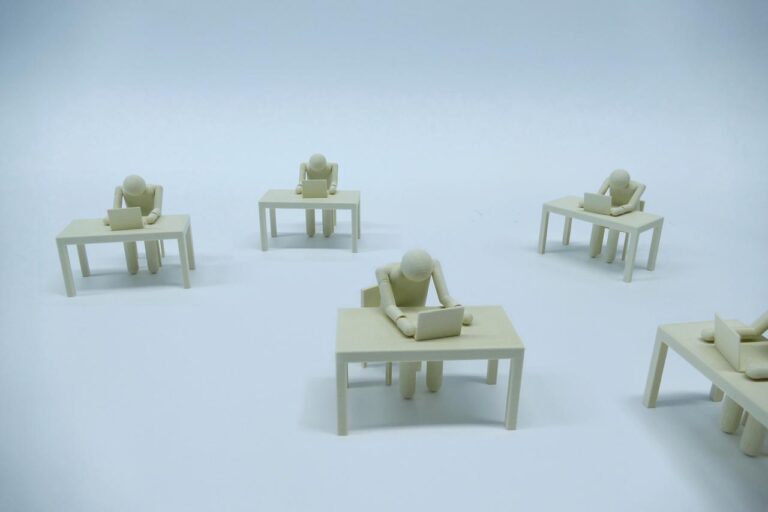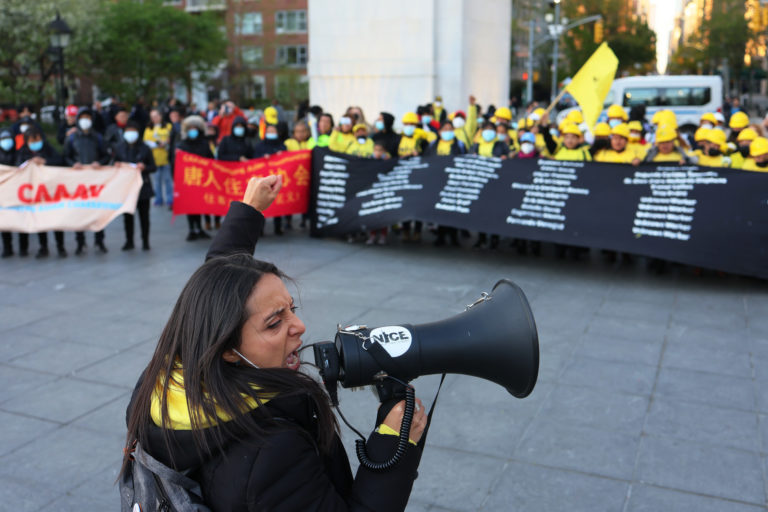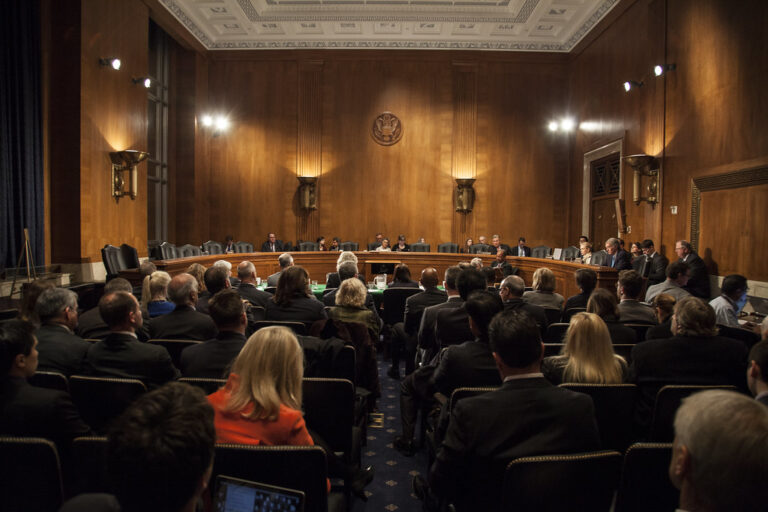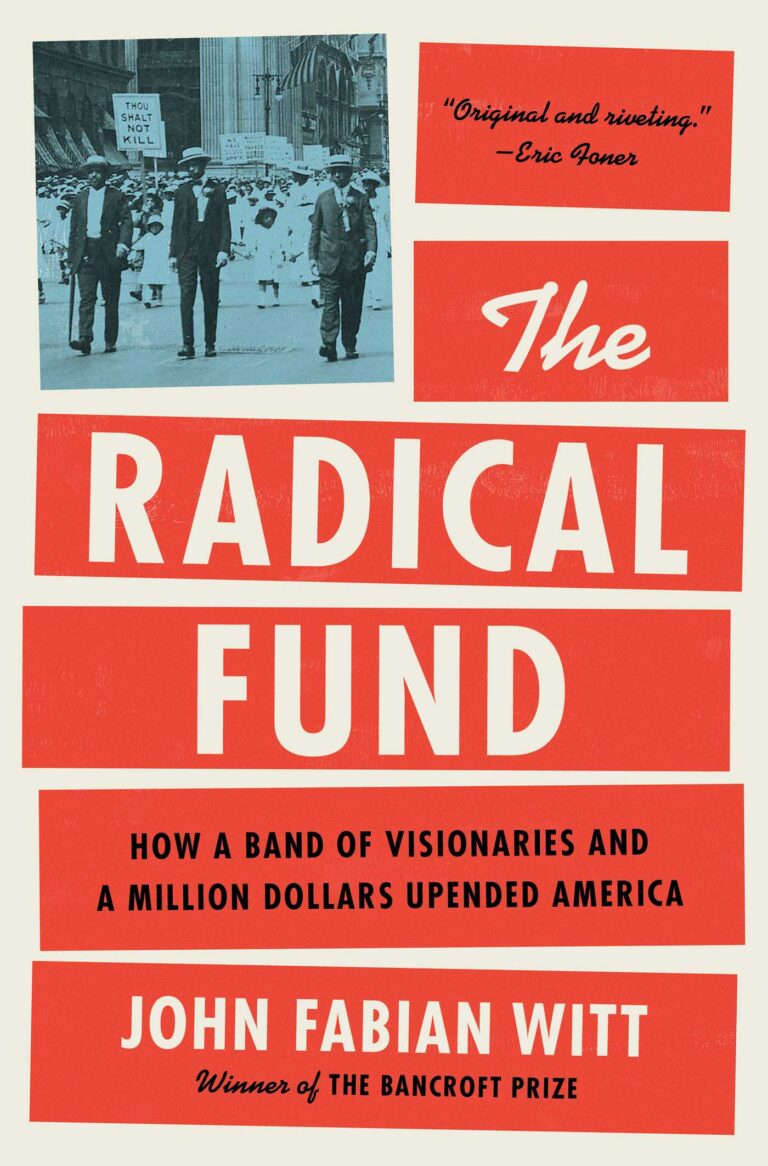
Liana Wang is a student at Harvard Law School.
The University of Pittsburgh Medical Center is Pennsylvania’s largest private employer. Through a series of aggressive acquisitions over the past twenty years, UPMC has expanded from 12 to 40 hospitals and now employs over 95,000 workers. As if to symbolize its monopoly power, UPMC houses its corporate headquarters in the U.S. Steel Tower. Today, UPMC controls nearly three out of four hospital jobs in Western Pennsylvania.
As UPMC has grown, so have the number of worker complaints against the hospital chain. By 2018, the National Labor Relations Board had found that UPMC violated federal labor law more than 150 times. On Reddit, employees described working for UPMC as “the most toxic experience of my life,” and feeling “at a breaking point” from being short-staffed, underpaid, and overworked. Employees have a running joke that UPMC stands for “You Pay Me Cheap.” In a 2021 survey of Pittsburgh area hospital workers, 64% of respondents reported trouble paying rent, mortgage or utility bills.
Unbowed, Virginia Ross, Jennifer Mizell, and a group of other former UPMC nurses filed an antitrust class action suit against the hospital giant in Ross v. UPMC, No. 1:24-cv-00016 (W.D. Pa. Jan 18, 2024). The suit is unusual for two reasons. First, it alleges that UPMC illegally exploited its monopsony power in violation of Section 2 of the Sherman Antitrust Act. Second, it argues that UPMC’s unfair labor practices and use of non-competes is evidence of the hospital’s anti-competitive conduct.
A Monopsony Suit
As opposed to a monopoly, which occurs when there is only a single seller of goods and services in a given market, a monopsony occurs when there is only a single buyer. In the same way that a monopolist may seek to control a product market in order to increase prices, because consumers have no other purchasing options, a monopsonist may seek to control a labor market to lower wages, because workers have nowhere else to go. Although the Sherman Act is broad and theoretically covers monopsonization, labor monopsony lawsuits are rare. Government enforcers, litigators, and the courts have almost overwhelmingly focused on product market antitrust litigation, “[leaving] behind a thin trail of case law” on labor monopsonies. Only in the past few years has the federal government even begun to examine anti-competitive labor market effects in mergers and acquisitions. In this context, the nurses’ antitrust lawsuit, based primarily on UPMC’s exploitative conduct in the labor market and its cumulative market power over time, is novel. Indeed, UPMC’s motion to dismiss complains about being hit with an “unprecedented theory of antitrust liability,” arguing that labor and employment should be governed by other federal statutes, not antitrust law.
The nurses contend UPMC, through strategic mergers, acquisitions, and hospital closures, is now the dominant (if not the only) buyer of skilled healthcare labor in the regions where it is present. In rural areas, UPMC can control over 90% of the healthcare market. Because healthcare workers tend to have industry-specific education and skills, they often cannot easily move into other industries.
UPMC has allegedly wielded this monopsony power to artificially suppress wages and increase workloads. An empirical study commissioned by the plaintiffs found that a 10% increase in UPMC’s market share within a commuting zone led to reductions in workers’ hourly wages by 30 to 57 cents. The study found significant wage differentials for everyone from physicians to medical assistants, housekeeping, and laundry and linen workers. One UPMC employee related that “our wages are so low…we have to visit the foodbank just to survive. Many of us are in medical debt to our own employer—a hospital. How ironic is that?” Simultaneously, the plaintiffs allege that UPMC has leveraged its market power to increase employees’ workloads. They argue that staffing ratios at UPMC hospitals are 19% lower than at competitor hospitals, where staffing ratios have increased over the past decade.
Anti-Union, Anti-Competition
How did UPMC become a monopsony? Not by being the best employer on the block, the plaintiffs argue. Instead, the complaint is also novel for asserting that anti-union conduct is anti-competitive conduct. The nurses allege that UPMC relentlessly used labor violations, functional noncompetes, and blacklists to become the dominant employer in the area. The complaint builds on a theory advanced by SEIU in a separate complaint to the DOJ, which documents 133 unfair labor practice charges since 2012 and 159 separate allegations of violations. When UPMC threatened, interrogated, and fired employees for exercising their labor rights and when UPMC created a pseudo labor organization to counter the union, UPMC wasn’t just committing labor violations. It was acting anti-competitively to undermine workers’ ability to restrain its monopsony power, preventing them from bargaining for better pay and working conditions.
The labor violations were accompanied by other restrictions on workers’ rights. Doctors and nurses reported signing non-compete provisions which prevented them from working anywhere else in Allegheny County. UPMC also used “Training Repayment Agreement Programs” buried deep in employment contracts, which can require nurses to repay UPMC for any UPMC-provided training if they leave. These agreements literally trap workers in their current positions, unable to easily exit, enhancing UPMC’s dominance in healthcare labor markets in the process.
What Happens Next?
In September 2024, the Department of Justice filed a Statement of Interest in the case supporting the plaintiffs. The DOJ argued that UPMC erroneously sought “to hold plaintiffs in labor-market-monopsonization cases to a demonstrably—and improperly—higher standard than the one applicable in other [Sherman Act] contexts.” It also voiced support for plaintiffs’ theory that non-competes and anti-union tactics can be key elements of an anticompetitive scheme by “limit[ing] unionized rivals’ ability to ‘compete profitably.’” Urging the court to apply the same rigorous standards developed for product markets and consumers, the DOJ reiterated that “the terminology of monopsony claims may differ from monopoly claims, but the harms they cause are no less pernicious…and the Sherman Act condemns both with equal vigor.” In January 2025, Judge Susan Paradise Baxter heard oral argument on the case, and the case is still ongoing.
To some onlookers’ surprise, the DOJ and FTC have continued to vigorously prosecute antitrust cases under the Trump Administration—as demonstrated by current cases against Google and Meta. The FTC has also retained the 2023 Merger Guidelines issued under the Biden Administration which focuses on market concentration and accounts for harms like reduction in labor competition. However, it’s unclear if the DOJ will continue to support the same theories as their Biden Administration predecessors did in the Ross brief.
Regardless of the Trump Administration’s stance, Ross v. UPMC sets an important example for how workers themselves may wield antitrust law in the fight for fair pay and better treatment. The theory of liability developed by the Ross plaintiffs could likely be leveraged against other monopsonist employers. While the NLRB stands on shaky ground and the FTC’s non-compete rule has been enjoined, the argument that anti-union tactics and non-competes may be inherently anti-competitive potentially offers an alternate pathway for workers and unions to challenge these practices.










Daily News & Commentary
Start your day with our roundup of the latest labor developments. See all
November 20
Law professors file brief in Slaughter; New York appeals court hears arguments about blog post firing; Senate committee delays consideration of NLRB nominee.
November 19
A federal judge blocks the Trump administration’s efforts to cancel the collective bargaining rights of workers at the U.S. Agency for Global Media; Representative Jared Golden secures 218 signatures for a bill that would repeal a Trump administration executive order stripping federal workers of their collective bargaining rights; and Dallas residents sue the City of Dallas in hopes of declaring hundreds of ordinances that ban bias against LGBTQ+ individuals void.
November 18
A federal judge pressed DOJ lawyers to define “illegal” DEI programs; Peco Foods prevails in ERISA challenge over 401(k) forfeitures; D.C. court restores collective bargaining rights for Voice of America workers; Rep. Jared Golden secures House vote on restoring federal workers' union rights.
November 17
Justices receive petition to resolve FLSA circuit split, vaccine religious discrimination plaintiffs lose ground, and NJ sues Amazon over misclassification.
November 16
Boeing workers in St. Louis end a 102-day strike, unionized Starbucks baristas launch a new strike, and Illinois seeks to expand protections for immigrant workers
November 14
DOT rule involving immigrant truck drivers temporarily stayed; Unions challenge Loyalty Question; Casino dealers lose request for TRO to continue picketing